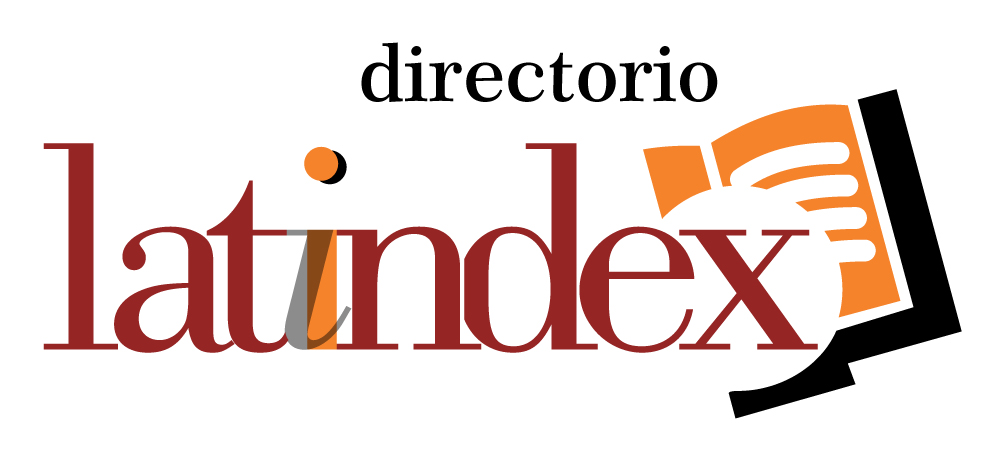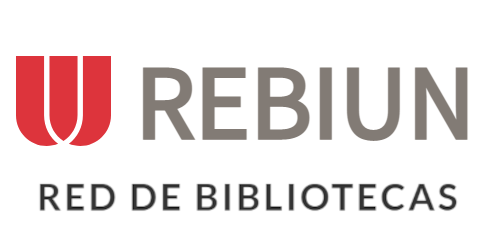Efectividad del Uso de la Simulación en la Formación de Estudiantes de Enfermería
Resumen
Introducción. La simulación es el “proceso mediante el cual intentamos lograr resultados que se acerquen lo más posible a la práctica clínica”; es una técnica para sustituir o completar experiencias de la vida real con experiencias guiadas. Objetivo. Describir la efectividad del uso de la simulación en la formación de estudiantes de enfermería. Metodología. El estudio es de tipo de revisión bibliográfica, que fueron hallados en la base de datos registros, Google Académico, Semantic Scholar, Pubmed, Scielo, Scopus; luego de aplicar los criterios de inclusión y exclusión acorde a los lineamientos PRISMA-ScR 2020, se llega a integrar a quince artículos científicos para revisión (Semantic Scholar = 10, PubMed = 4, Scielo = 1); en la búsqueda de estudios se emplearon descriptores por medio de palabras claves relacionadas con las ciencias de la salud (DeCS/MeSH): Estudiantes de enfermería, simulación, formación de estudiantes. Resultados. Se hallaron 722 artículos científicos, de los cuales 463 artículos fueron eliminados por duplicidad; así mismo, 209 estudios fueron eliminados por inconsistencia con los títulos y resúmenes, llegando a tener quince artículos que cumplen criterios para estudio y revisión. Conclusión. Los estudiantes de enfermería con ABS se sintieron realizados; seguros al manejar la atención de un paciente; tiene un efecto positivo y una buena importancia, mejorando las puntuaciones de comunicación enfermera-paciente, habilidades operativas experimentales, pensamiento crítico; y sentando una buena base médica y capacidad de autoaprendizaje.
Descargas
Citas
2. Foronda, C., Alfes, C.M., Dev, P., et al. Virtually nursing: emerging technologies in nursing education. Nurse Educ. 201, 42 (1): 14–17. Disponible en: https://doi.org/10.1097/NNE.000000000000000295
3. Aebersold, M. Aprendizaje basado en simulación: Ya no es una novedad en la educación de pregrado. Revista Online de Temas de Enfermería. 2018; 23(2): 1.
4. Plotzky, C., Lindwedel, U., Sorber, M., Loessl, B., König, P., Kunze, C. et.al. Virtual reality simulations in nurse education: A systematic mapping review. Nurse Education Today. 101(1): 104868. Disponible en: https://doi.org/10.1016/j.nedt.2021.104868.
5. Horsley, T., & Wambach, K. Effect of nursing faculty presence on students’ anxiety, self-confidence, and clinical performance during a clinical simulation experience. Clinical Simulation in Nursing. 2015 Jan;11(1): 4–10. Disponible en: https://doi.org/10.1016/j.ecns.2014.09.012
6. Haugland, V.L., Reime, M.H., Scenario-based simulation training as a method to increase nursing students’ competence in demanding situations in dementia care. A mixed method study. Nurse Educ. Pract. 2018; 33(1): 164–171. Disponible en: https://doi.org/10.1016/j.nepr.2018.08.008
7. Meiers, J., & Russell, M. J. An unfolding case study: Supporting contextual psychomotor skill development in novice nursing students. International journal of nursing education scholarship. 2019; 16(1): 20180013. Disponible en: An Unfolding Case Study: Supporting Contextual Psychomotor Skill Development in Novice Nursing Students (degruyter.com)
8. Marshall, I.J., Wallace, B.C. Toward systematic review automation: a practical guide to using machine learning tools in research synthesis. Systematic Reviews. 2019; 8(1): 163. Disponible en: https://www.scopus.com/inward/record.uri?eid=2-s2.0-85062764924&doi=10.1186%2fs13643-019-1074-9&partnerID=40&md5=93f58d6da6102adfb4a8a9db7c9daef0
9. Lee, B. O., Liang, H. F., Chu, T. P., & Hung, C. C. Effects of simulation-based learning on nursing student competences and clinical performance. Nurse education in practice. 2019; 41(1): 102646. Disponible en: https://www.sciencedirect.com/science/article/abs/pii/S1471595319300927
10. Bliss, M., & Aitken, L. Does simulation enhance nurses' ability to assess deteriorating patients. Nurse education in Practice. 2018; 28(1): 20-26. Disponible en: https://doi.org/10.1016/j.nepr.2017.09.009
11. Bonaduce, S. Escaping traditional instruction: The use of escape room simulation to enhance nursing students’ clinical judgment skills. Teaching and Learning in Nursing. 2024; 19(2): e427-e431. Disponible en: https://doi.org/10.1016/j.teln.2024.01.008
12. Youn-Joo, U. Pre-service nurses’ experiences of simulated health education classes: A phenomenological study. Heliyon. 2024; 10(6): e27703. Disponible en: https://doi.org/10.1016/j.heliyon.2024.e27703
13. Kable, A., Levett-Jones, T., Arthur, C., Reid-Searl, K., Humphreys, M., Morris, S., et al. A cross-national study to objectively evaluate the quality of diverse simulation approaches for undergraduate nursing students. Nurse Educ Pract. 2018; 28: 248e56. Disponible en: https://doi.org/10.1016/j.nepr.2017.10.010
14. Bek, H., & Akhunlar Turgut, M. N. The Effect of Communication Skills Training on the Communication and Self-Disclosure Skill Levels of Students at Uşak University. Literatür Sempozyum. 2015; 8(1): 47-52.
15. INACSL Standards Committee. INACL Standards of Best Practice: SimulationSM simulation glossary. Clin Simul Nurs. 2016;12: 39e47. Disponible en: https://doi.org/10.1016/j.ecns.2016.09.012
16. MacLean, S., Kelly, M., Geddes, F., & Della, P. Use of simulated patients to develop communication skills in nursing education: an integrative review. Nurse Educ Today. 2017; 48: 90e8. Disponible en: https://doi.org/10.1016/j.nedt.2016.09.018
17. Boyde, M., Cooper, E., Putland, H., Stanton, R., Harding, C., Learmont B, et al. Simulation for emergency nurses (SIREN): a quasi-experimental study. Nurse Educ Today. 2018; 68: 100e4. Disponible en: https://doi.org/10.1016/j.nedt.2018.05.030
18. Lee, J., Oh, PJ. Effects of the use of high-fidelity human simulation in nursing education: a meta-analysis. J Nurs Educ. 2015; 54(9): 501e7. Disponible en: https://doi.org/10.3928/01484834-20150814-04
19. Boling, B., & Hardin-Pierce, M. The effect of high-fidelity simulation on knowledge and confidence in critical care training: an integrative review. Nurse Educ Pract. 2016; 16(1): 287e93. Disponible en: https://doi.org/10.1016/j.nepr.2015.10.004
20. Sari, D., & Erdem, H. The use of high fidelity simulation in nursing education: a literature review. J Hum Sci. 2017; 14(4): 3690e707. Disponible en: https://doi.org/10.14687/jhs.v14i4.4882
21. Cant, R. P., & Cooper, S. J. Use of simulation-based learning inundergraduate nurse education: An umbrella systematic review. NurseEducation Today. 2017; 49(1) 63–71. Disponible en: http://dx.doi.org/10.1016/j.nedt.2016.11.015
22. Sherwood, R. J., & Francis, G. The effect of mannequin fidelity on theachievement of learning outcomes for nursing, midwifery and alliedhealthcare practitioners: systematic review and meta-analysis. NurseEducation Today. 2018; 69(1): 81–94. Disponible en: http://dx.doi.org/10.1016/j.nedt.2018.06.025
23. Al-Ghareeb, A. Z., Cooper, S. J., & McKenna, L. G. Anxiety and clinicalperformance in simulated setting in undergraduate health professionalseducation: An integrative review. Clinical Simulation in Nursing. 2017; 13(10): 478–491. Disponible en: http://dx.doi.org/10.1016/j.ecns.2017.05.015
24. Cantrell, M. L., Meyer, S. L., & Mosack, V. Effects of simulation on nursingstudent stress: An integrative review. Journal of Nursing Education. 2017; 56(3): 139–144. Disponible en: http://dx.doi.org/10.3928/01484834-20170222-04
25. Young, J. E., Williamson, M. I., & Egan, T. G. Students’ reflections on therelationships between safe learning environments, learning challenge andpositive experiences of learning in a simulated GP clinic. Advances in HealthSciences Education: Theory and Practice. 2016; 21(1): 63–77. Disponible en http://dx.doi.org/10.1007/s10459-015-9611-3
26. Brown, N., Darby, W., & Coronel, H. An Escape Room as a Simulation Teaching Strategy. Clinical Simulation in Nursing. 2019; 30(1): 1-6. Disponible en: https://doi.org/10.1016/j.ecns.2019.02.002
27. Qi-Yoong, S., Tham-Schmidt, L., Kamala, M., &, Hui-Zhang, D. Using palliative and end-of-life simulation to enhance pre-licensure nursing students' emotional intelligence, palliative care knowledge and reflective abilities: A single group, pretest-posttest study. Nurse Education Today. 130(1): 105923. Disponible en: https://doi.org/10.1016/j.nedt.2023.105923
28. De Oliveira, S. N., do Prado, M. L., & Kempfer, S. S. Utilização da simulação no ensino da enfermagem: revisão integrativa. REME-Revista Mineira de Enfermagem. 2014; 18(2). 487- 495. Disponible en: https://periodicos.ufmg.br/index.php/reme/article/view/50171
29. Brown, J. Graduate nurses’ perception of the effect of simulation on reducing the theory-practice gap. SAGE Open Nursing. 2019; 5(1): 1-11. Disponible en: https://doi.org/10.1177/2377960819896963
30. Nye, C., Campbell, S., Hebert, S., Short, C., & Thomas, M. Simulation in advanced practice nursing programs: a North-American survey. Clin Simul Nurs. 2019; 26: 3e10. Disponible en: https://doi.org/10.1016/j.ecns.2018.09.005
31. Galvão T. Principais itens para relatar Revisões sistemáticas e Meta-Análises: Arecomendação PRISMA. Epidemiol Serv Saúde. 2015 [citado 22 sep 2023]; 24(2): 335-42. Disponible en: Disponible en: https://www.researchgate.net/publication/279712773_Principais_itens_para_relatar_Revisoes_sistematicas_e_Meta-analises_A_recomendacao_PRISMA
32. Matthew J, McKenzie JE, Bossuyt P, Boutron I, Hoffmann T, Mulrow C, et al. Declaración PRISMA 2020: Una guía actualizada para la publicación de revisiones sistemáticas», Rev. Esp. Cardio. 2021; 74:790-799. Disponible en: https://www.revespcardiol.org/es-pdf-S0300893221002748
33. Guo, L., Yin, X., Zeng, X., Tang, L., & Zhang, D. Nursing Practice Combined with Scene Simulation Teaching Mode in Standardized Training and Teaching for Newly Recruited Nurses in Post Anesthesia Care Unit. Iranian Journal of Public Health. 2022; 51(4): 831-838. Disponible en: https://doi.org/10.18502/ijph.v51i4.9244
34. Silva, G., Oliveira, F., Coelho, A., Fonseca, L., Vieira, F., Campbell, S., et al. Influence of simulation design on stress, anxiety and self-confidence of nursing students: Systematic review with meta-analysis. Journal of clinical nursing. 2023; 32(17-18): 5668-5692. Disponible en: https://doi.org/10.1111/jocn.16681
35. Öztaş, B., Kara, B., Zengi̇n, H., Güçlü, A., & On, B. Simülasyon Laboratuvarında Verilen Eğitimin Hemşirelik Öğrencilerinin İntravenöz Kateterizasyon Becerisine Etkisi. Hacettepe Üniversitesi Hemşirelik Fakültesi Dergisi. 2022; 9(1): 17-23. Disponible en: https://doi.org/10.31125/hunhemsire.1101859
36. Guerra, C., Carrasco, P., & Garcia, N. History and challenges of clinical simulation in the learning of procedural skills by nursing students. Chilean medical journal. 2022; 150(2): 216-221. Disponible en: https://doi.org/10.4067/s0034-98872022000200216.
37. Hardenberg, J., Rana, I., & Tori, K. Simulation Exposure Improves Clinical Skills for Postgraduate Critical Care Nurses. Clinical Simulation in Nursing. 2019; 28(1): 39-45. Disponible en: https://doi.org/10.1016/J.ECNS.2018.12.007
38. Wyatt, P. Improving the Competency of Nurse Educators in the Use of Simulation. International Journal of Nursing and Health Care Research. 2023; 5(8): 1-22. Disponible en: https://doi.org/10.29011/2688-9501.101456
39. Jarelnape, A., & Sagiron, E. Evaluation of the Effectiveness of Simulation-Based Teaching on Nursing Education: A Systematic Review. Egyptian Journal of Health Care. 2023; 14(3): 302-311. Disponible en: https://doi.org/10.21608/ejhc.2023.316222
40. Tonapa, S., Mulyadi, M., K.H.M., H., & Efendi, F. Effectiveness of using high-fidelity simulation on learning outcomes in undergraduate nursing education: systematic review and meta-analysis. European review for medical and pharmacological sciences. 2023; 27(2): 444-458. Disponible en: https://pubmed.ncbi.nlm.nih.gov/36734697/
41. Cant, R., Ryan, C., & Kelly, M. Use and Effectiveness of Virtual Simulations in Nursing Student Education. CIN: Computers, Informatics, Nursing. 2023; 41(1): 31-38. Disponible en: https://pubmed.ncbi.nlm.nih.gov/35926237/
42. Smith, T., Dudding, K., Knight, C., Sanders, A., Currie, E., & Shorten, A. Highlighting Simulation Practices in the Neonatal Environment. Neonatal Network. 2020; 39(5): 257-262. Disponible en: https://pubmed.ncbi.nlm.nih.gov/32879041/
43. Xiao, S., Fang, J., Zhao, X., Yang, L., Tang, H., & Wang, Y. Analysis of Obstetric Clinical Nursing Integrating Situational Teaching Simulation. Computational and Mathematical Methods in Medicine. 2022; 1(1):1-12. Disponible en: https://doi.org/10.1155/2022/6843196
44. John, B., & Marath, U. Simulation in pediatric nursing education: Are there enough evidence for future practice?. IP Journal of Paediatrics and Nursing Science. 2022; 4(4): 121-126. Disponible en: https://doi.org/10.18231/j.ijpns.2021.026
45. Byrne, D., Blumenfeld, S., Szulewski, M., & Laske, R. Using Simulation to Develop Clinical Judgment in Undergraduate Nursing Students. Home Healthcare Now. 2023; 41(2): 84 - 89. Disponible en: https://pubmed.ncbi.nlm.nih.gov/36867481/
46. Anderson, A., & Hill, A. Transforming Teaching of Foundational Nursing Skills to Enhance Clinical Reasoning Development: A Proposed Simulation Based Learning Activity. Journal of Applied Learning in Higher Education. 2023; 9(6): 85-96. Disponible en: https://doi.org/10.57186/jalhe_2023_v9a6p85-96.
47. Purwanti, L., Sukartini, T., Kurniawati, N., Nursalam, N., & Susilowati, T. Virtual Simulation in Clinical Nursing Education to Improve Knowledge and Clinical Skills: Literature Review. Open Access Macedonian Journal of Medical Sciences. 2022; 10(1): 396-404. Disponible en. https://doi.org/10.3889/oamjms.2022.9435
Derechos de autor 2025 Carlos Guzmán Huaraca Carhuaricra, Natali Roxana Mori Yachas, Juana Rosario Callupe Chávez, Rocio de Milagro Callupe Chávez, Jerardo Anchante Jacobo, Gianina del Rosario Morales Aylas

Esta obra está bajo licencia internacional Creative Commons Reconocimiento 4.0.













.png)




















.png)
1.png)


